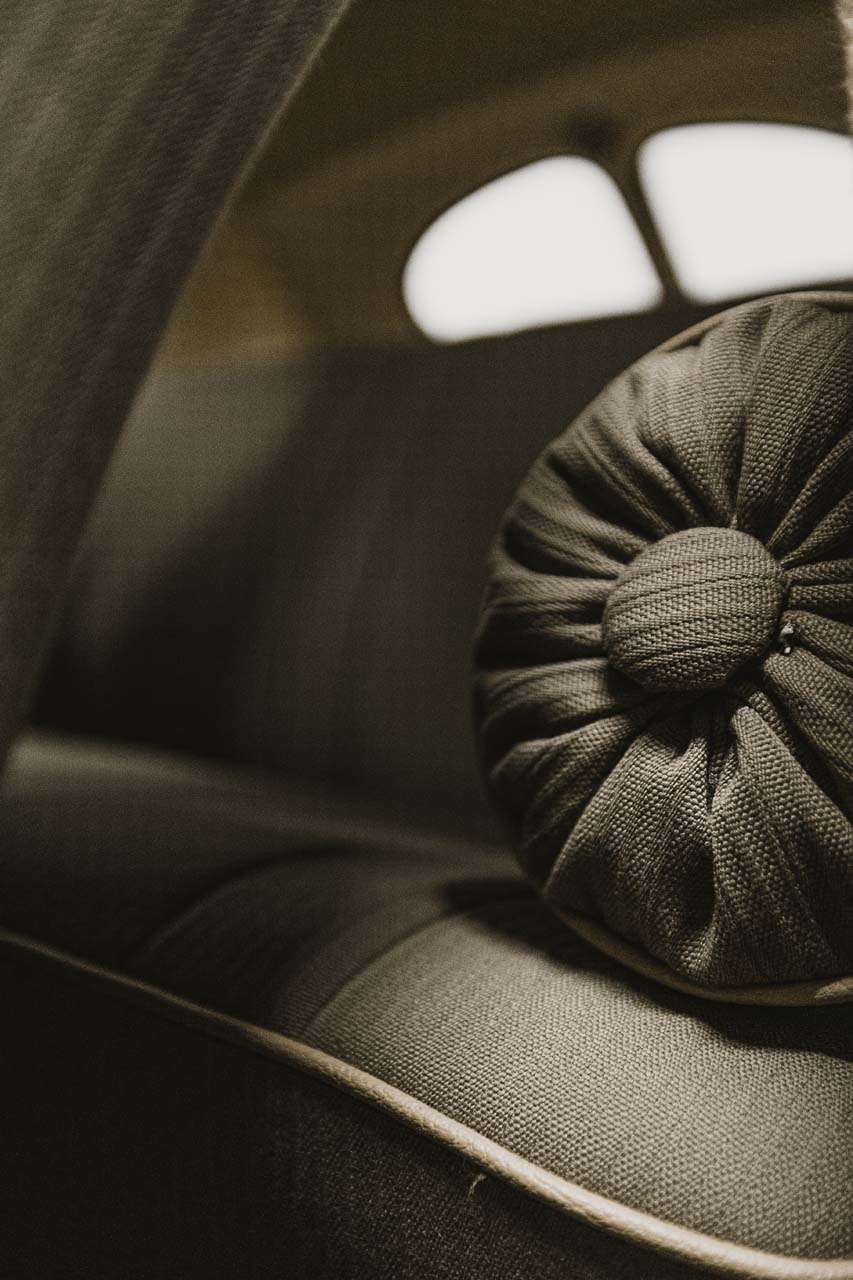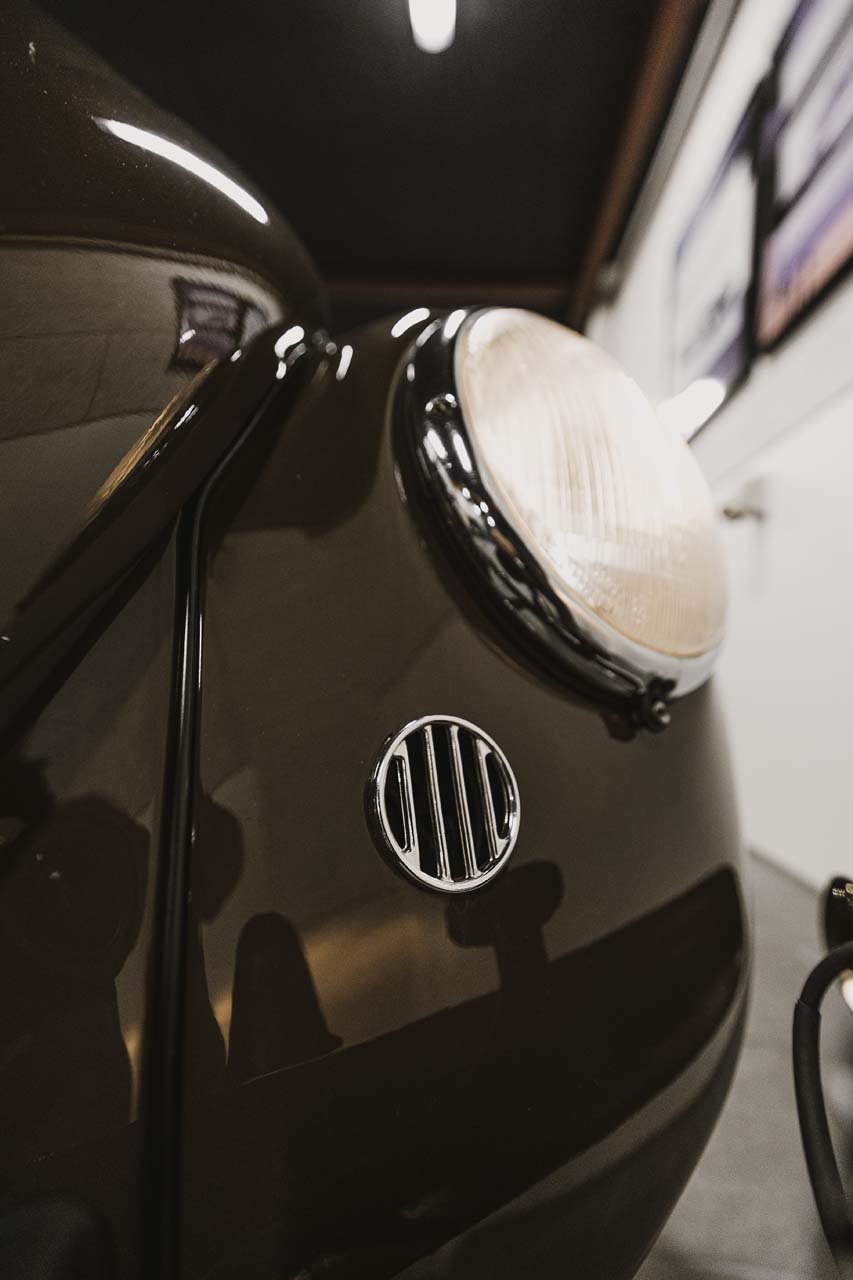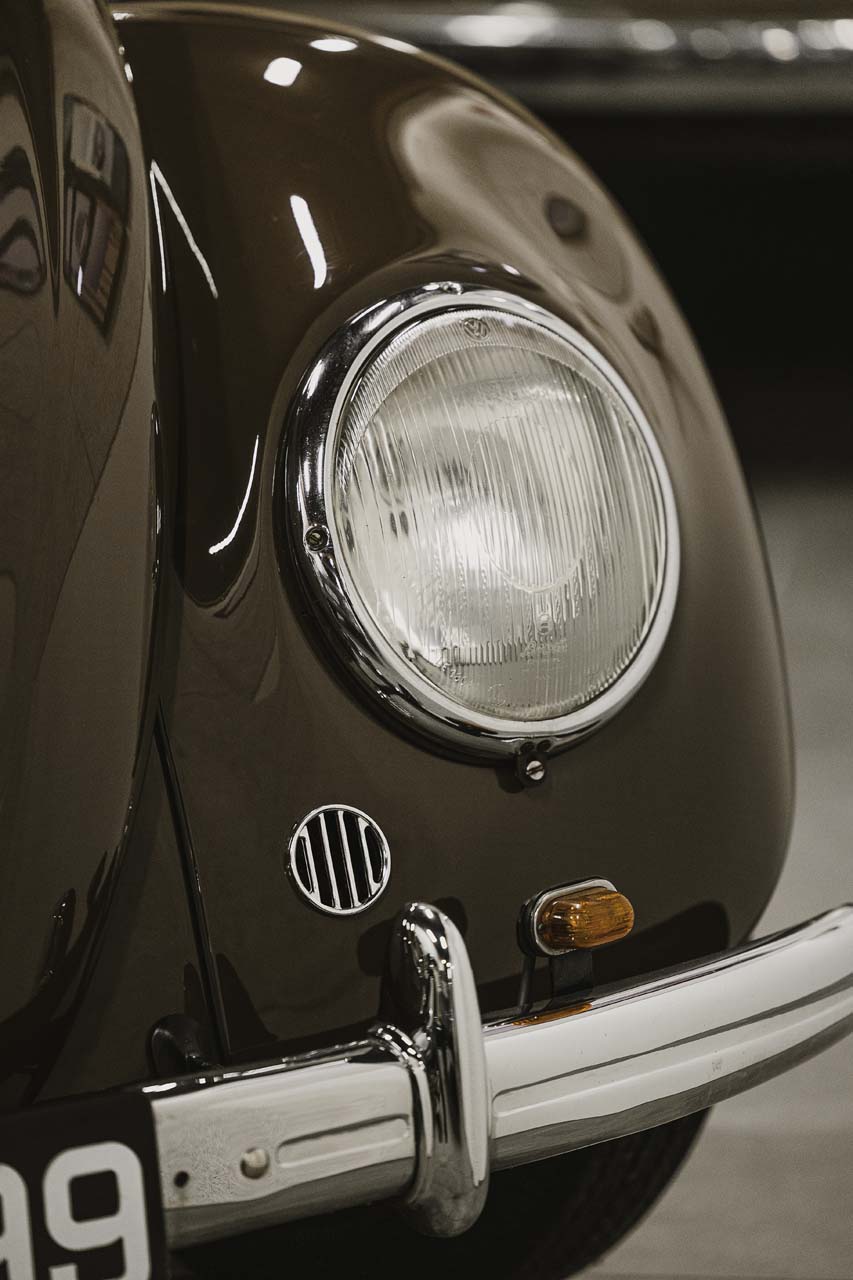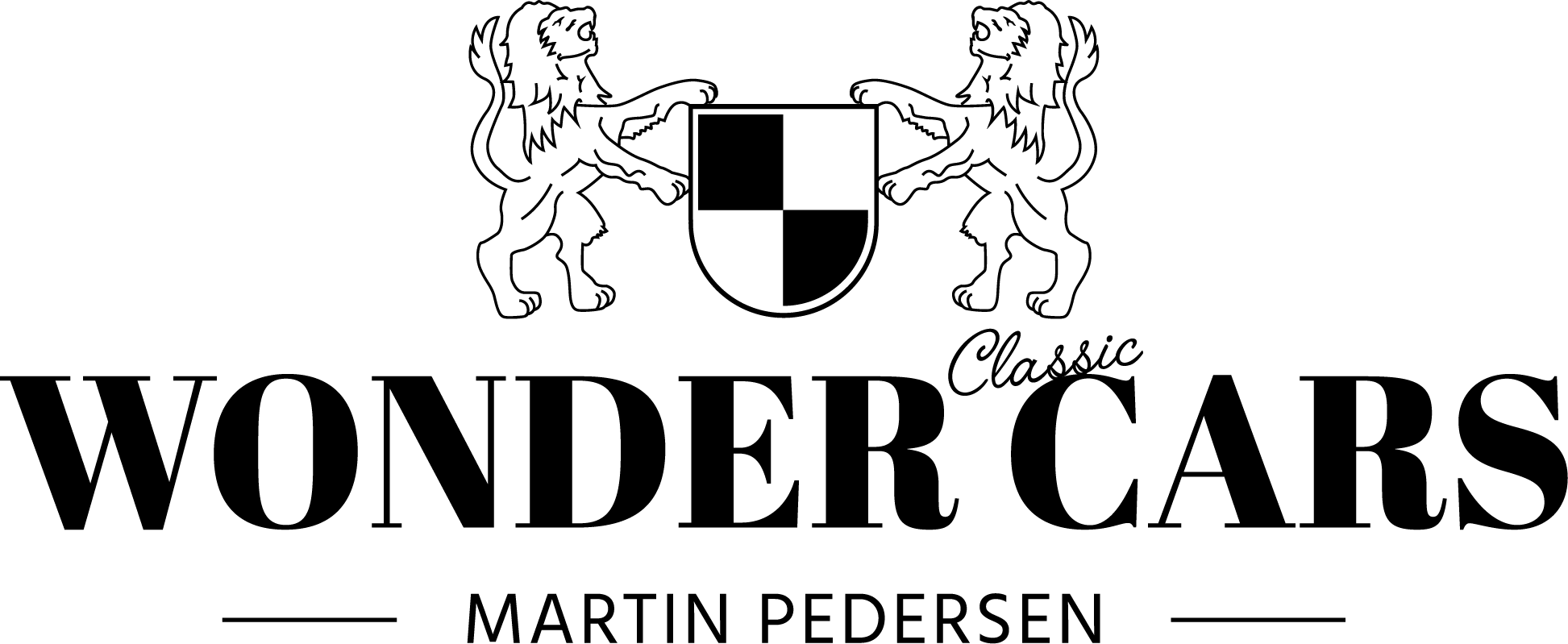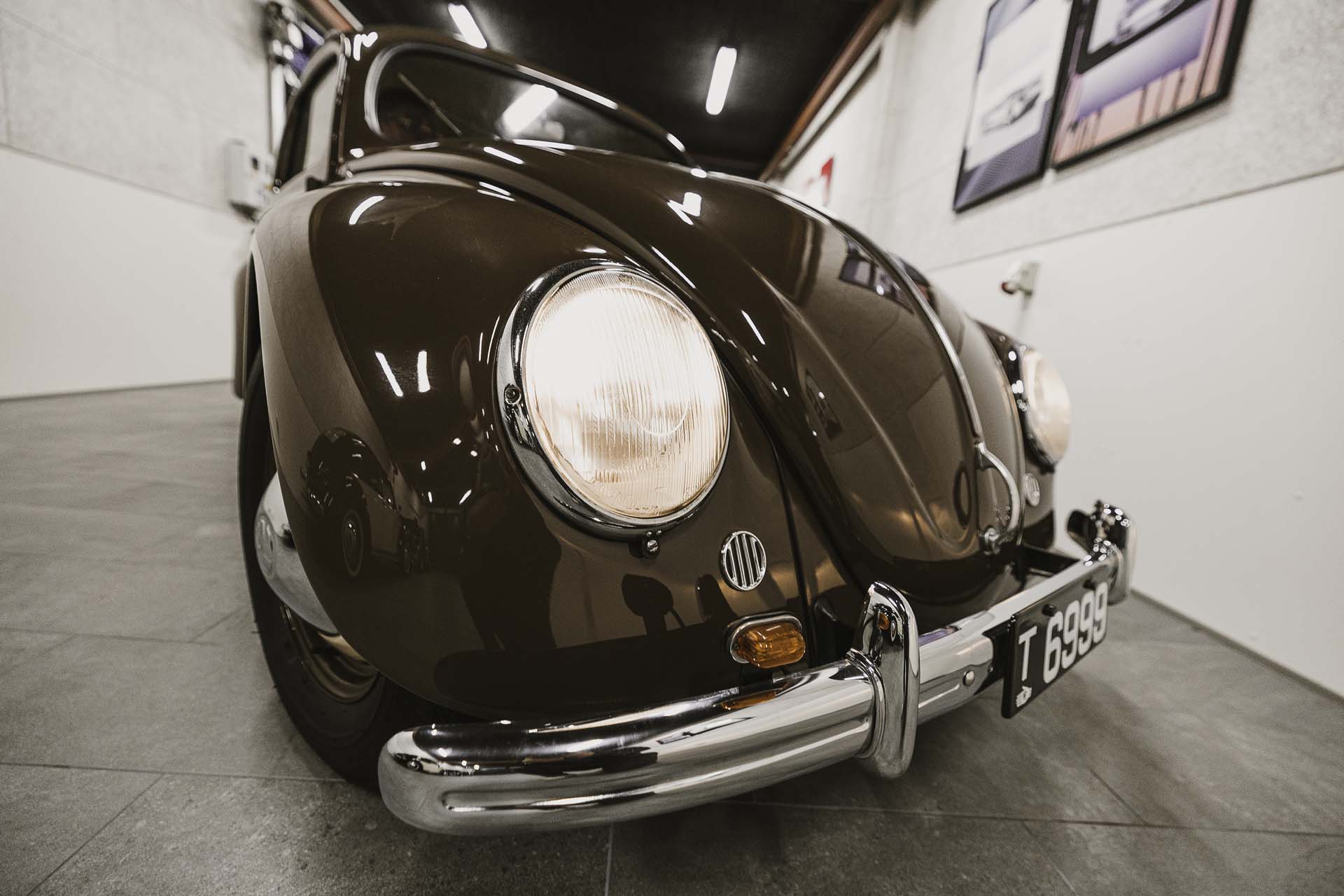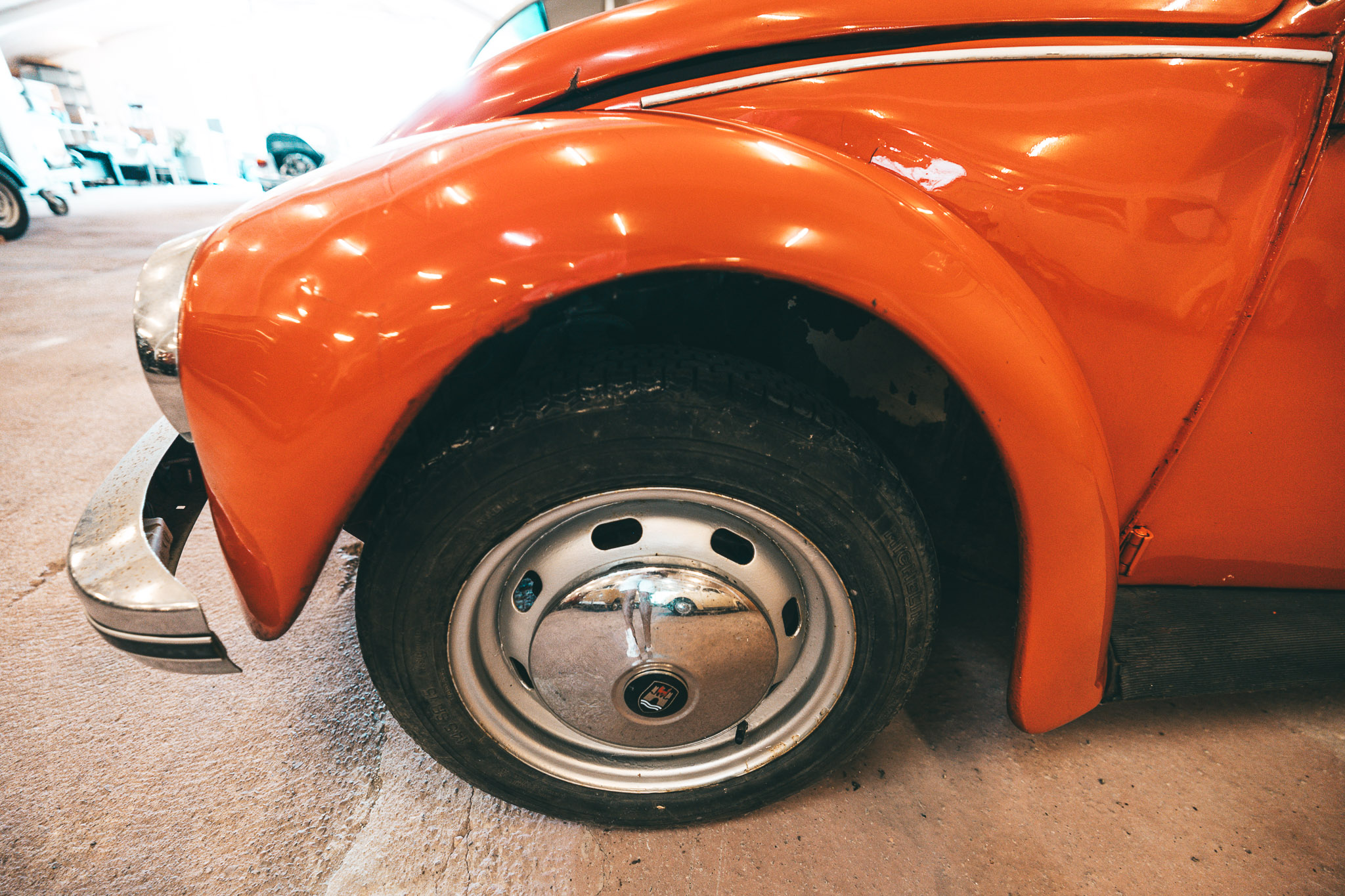Car No. 23
10/1949
Motor: 1131 cc
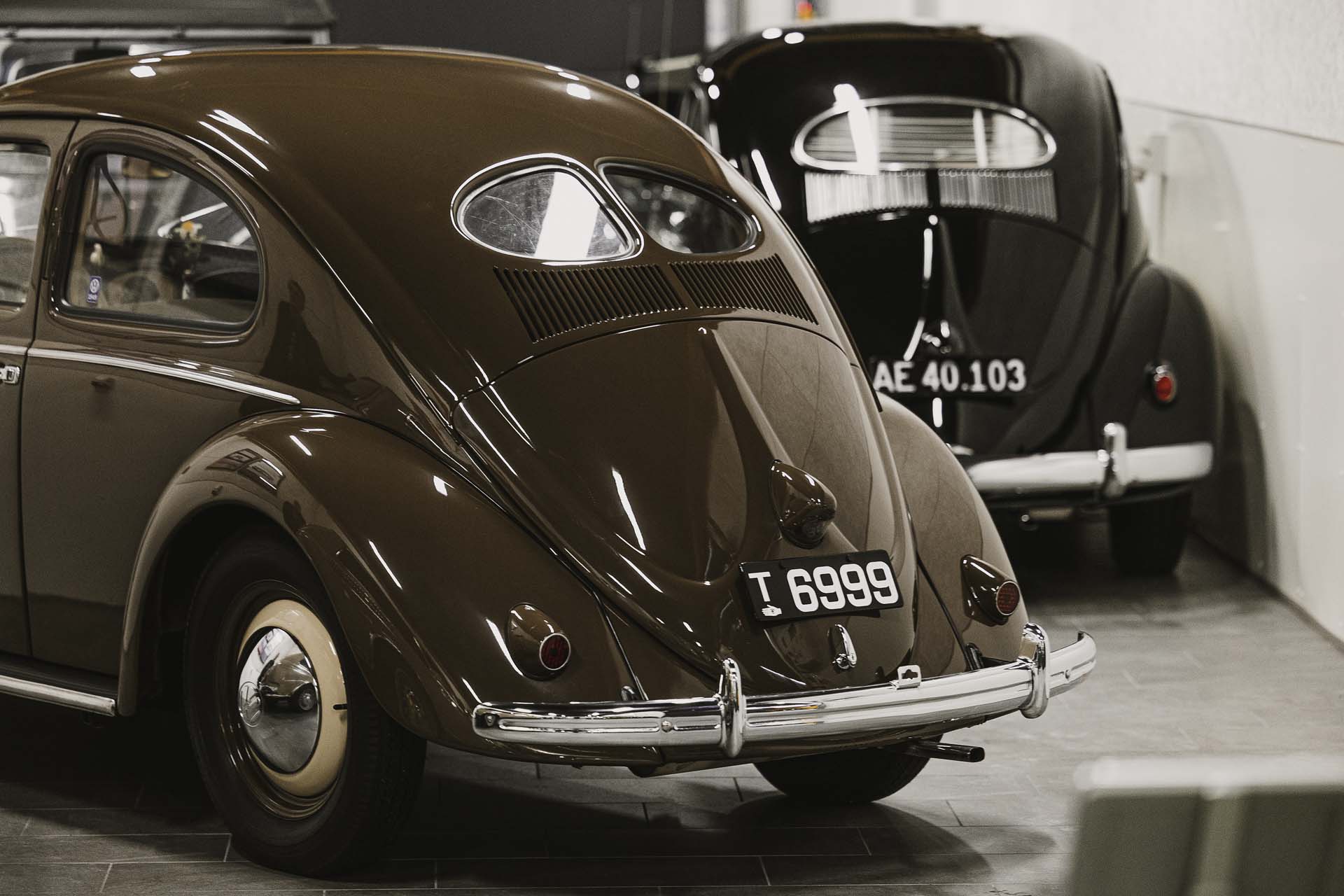

Shortly after the Second World War VW began producing the Type 1 – it was, however, mostly post-war military vehicles.
In 1947, the supply situation with steel and other materials improved, and VW could start an actual production for civilian use. During the first year as many as 9.000 vehicles were produced.
In 1948, the number rose to as many as 19.000 vehicles, where the idea was that cheap vehicles were needed throughout Central Europe after a world war that had destroyed so much.
The engine was 1131 CC and had 25 hp. It performed a top speed just about 100 km/h, which lived up to the idea of producing a cheap car for the people with room for 5 passengers. The car was able to drive on the highway network at speeds up to 100 km/h.

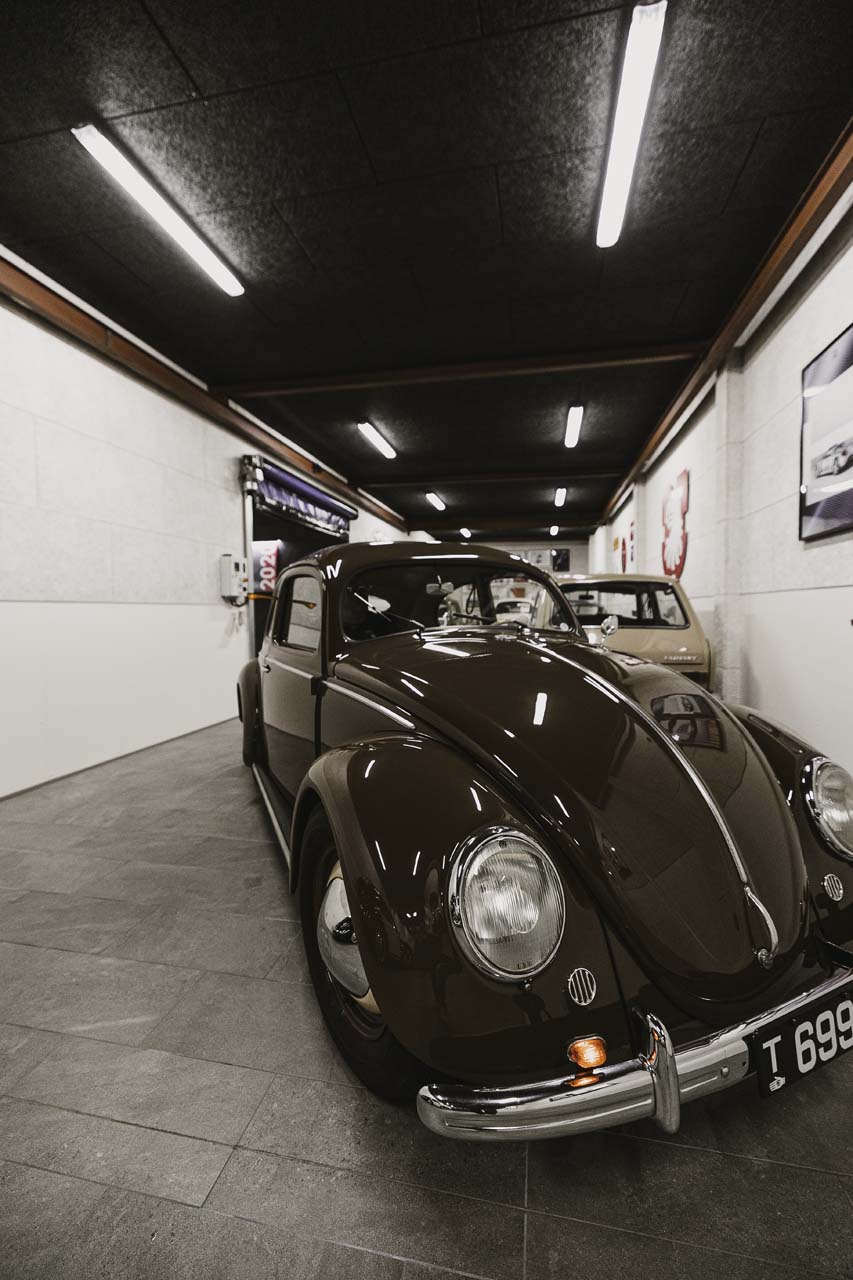
The export model
The VW factory in Wolfsburg had now begun to gain capacity to export the VW Type 1. From the end of 1947 and until things really got going at the beginning of 1949, the first markets were the surrounding countries; the Netherlands, Belgium, Denmark, and Sweden. The export model had chrome-plated front and rear bumpers. Head lamp rims, trim clip along the running board on left/right side and wheel covers (chrome-plated with a VW logo in the middle) were extras compared to the first cars, where these simply were painted in the colours of the car.
The car had already undergone some development from the original 20 hp in the military models to the civil VW engine which now had 25 hp together with the above-mentioned export model changes. This meant that in certain export markets as e.g., the Netherlands and Belgium changed the designation from VW Type 1 to VW Type 11.
In 1949, the legendary VW director Heinz Nordhoff was hired, and production really started. At the same time the engine capacity was increased to 34 hp.
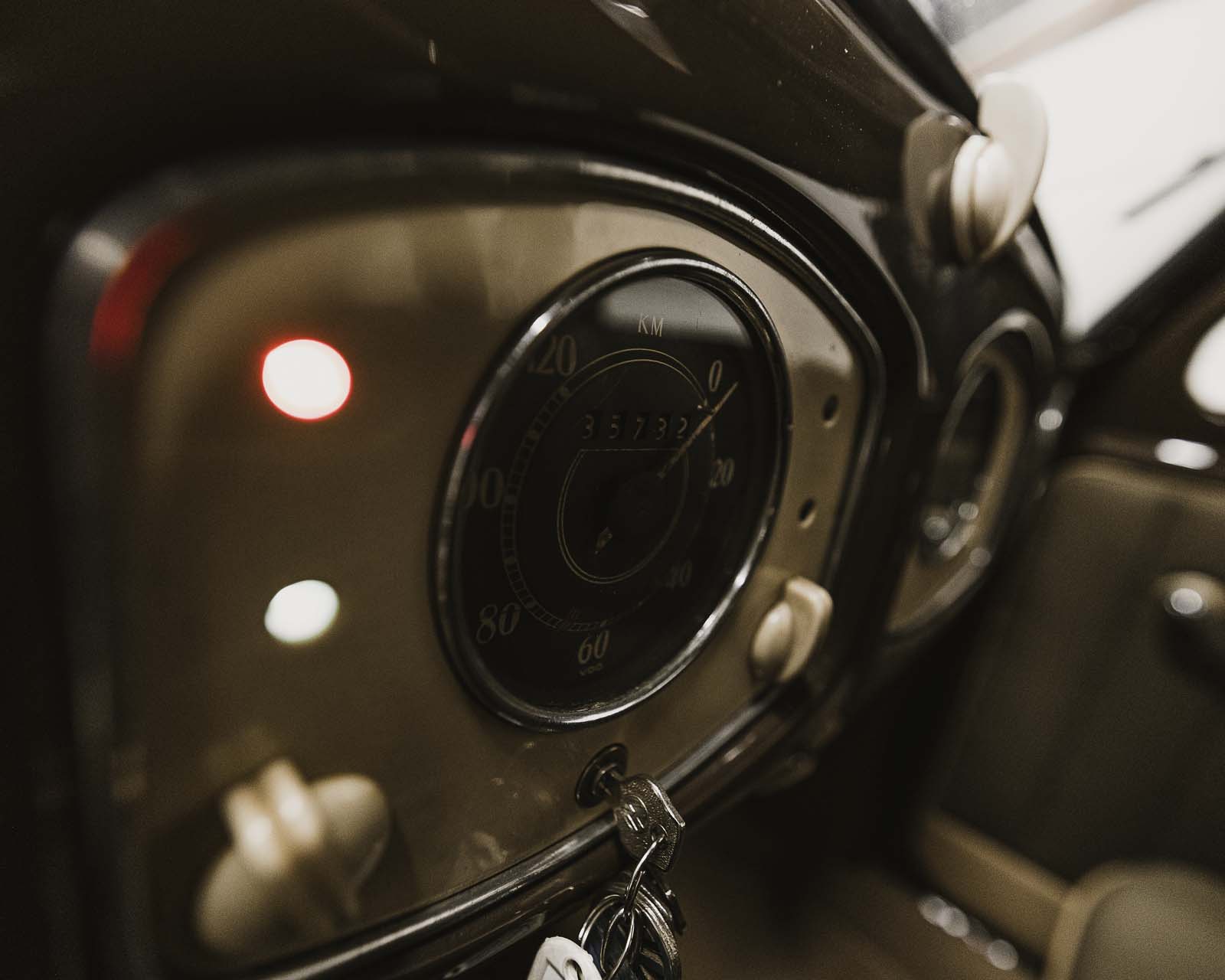
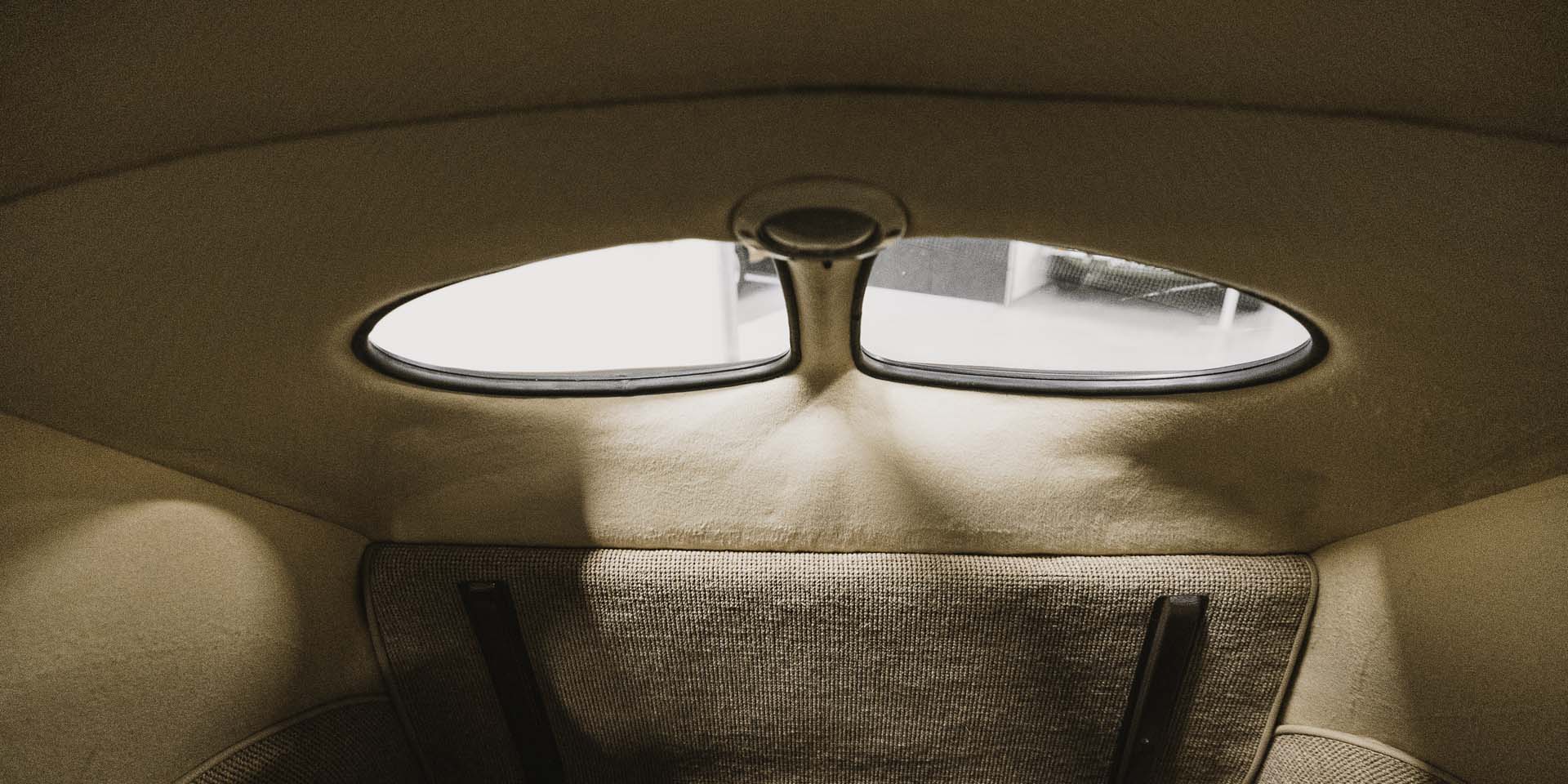
History
My VW Type 11 Sedan produced in October 1949 is a real export model. It was no. 13 exported to the Netherlands. The car was sold by the Dutch Pond Brothers and after many years in the Netherlands, it was exported to Sweden.
Oddly enough, the car ended up in a lakeside forest in Central Sweden around 2008, where it was found. I bought it from a Danish intermediary and had it fully restored in our own workshop in 2013.
In these very early models, there are an incredible number of details that is important to keep original in order for such a model to maintain its value.
The car has been completely restored back to what it was originally, i.e., with colour code L70 medium brown and matching colours in seats and door trim panels.
The engine has also been completely restored and today the car is in mint condition just as it was delivered from the factory.



